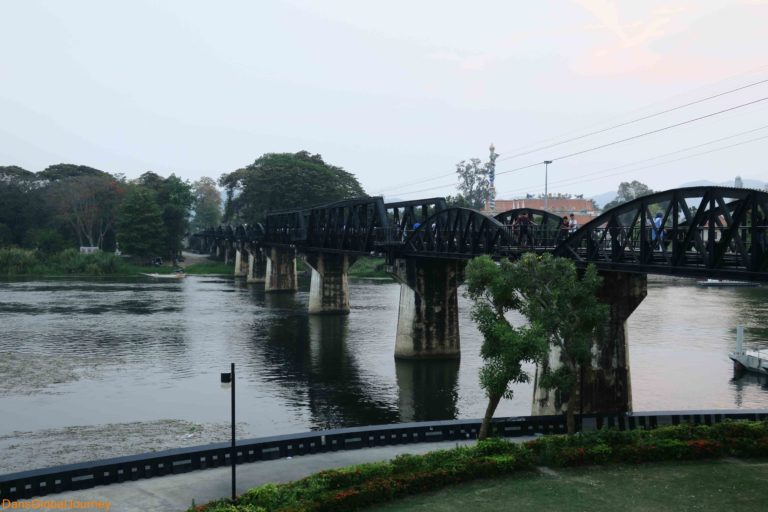The two most popular sights of Kanchanaburi Province are the former Death Railway to Nam Tok and the Erawan Falls. I only had two days in Kanchanaburi, so I decided against the waterfalls and opted for the historical option. Weird random events and an unpreparedness on my part lead to an interesting day
How to get to Nam Tok and the Hellfire Pass
You can either go by bus (50 Baht) or train (100 Baht) to the pass. But you have to remember that the bus and train station are at two different places in Kanchanaburi. When you take the bus, you have to tell the ticket inspector that you would like to get dropped off at the memorial. The bus ride roughly takes 2 hours. You get dropped off on the street next to the museum, and you still have to walk a few hundred metres to the entrance.
The train has far less departures, so you have to check the timetable in advance. It also rides for 2 hours, but the last stop is in Nam Tok. It’s a city 20 kilometres away from the Hellfire Pass. So from there you either have to take a bus which departs every hour or rent a taxi for a few hours. That’s why I chose to take the bus to the memorial and take the train back. It’s much smoother. Let’s start the day then…
The journey to the bus station
It was quite a long way from my guesthouse to the bus station, so I wanted to take a tuktuk. They’re actually no rip-offs in contrast to Bangkok and quite useful. But I also had to go to an ATM, because I only had around 300 Baht left. On my way to a 7/11 and its ATM, I came across a guy in a tuktuk who asked me whether I want to go somewhere. So why not use the opportunity? I was quite sure that I either find an ATM in the museum or Nam Tok itself. With 50 Baht less, I arrived at the bus station asking some employees to which platform I had to walk. It all went fine, so in the end I sat in the bus with my ticket. A two-hours long journey to Thailand’s countryside with 250 Baht and not much water left in my bottle (I remembered what else I wanted at the 7/11). What could go wrong?
The bus ride
The first unpleasant surprise was my seat neighbor. He already looked slightly weird, and in the middle of the journey he started to vomit a little in his hands and on the floor. Luckily, nothing went on me, but I still regretted to go by bus and counted the minutes until I arrived. My next surprise was the police checkpoint on the way from Nam Tok to the Hellfire Pass. Guess who didn’t have his passport with him? At least they didn’t control anyone, and I arrived a few minutes later. When the inspector came to me, I knew that I finally arrived. I was very happy that I made it to there.
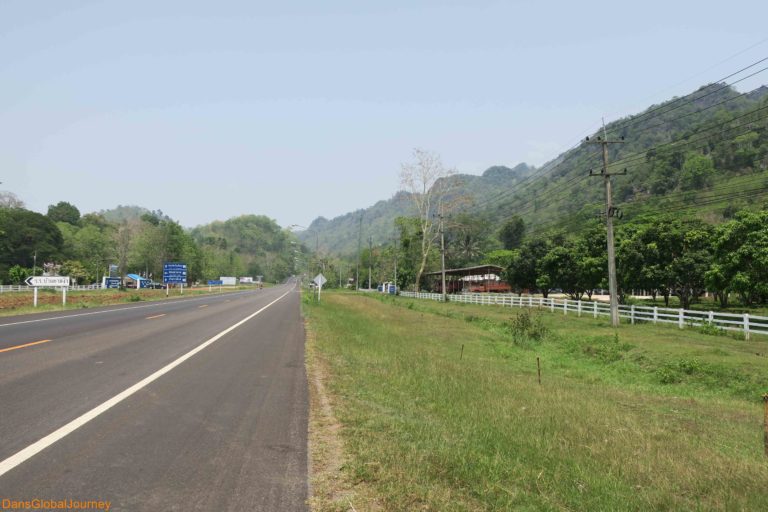
Information and history of the Hellfire Pass
From the street I walked to the entrance of the site which is open everyday from 9am to 4pm. There is a museum, which was renovated during my visit, and different trails which follow the former railroad tracks in the jungle. You could spend several hours there with many kilometres of hiking. For example, you could go down the gorge to Khwae Noi River. The memorial is free, but you can donate.
Back to the historical background, the Hellfire Pass was a part of the Thai-Burma Railway which was built during World War II by Japan using several thousands of prisoners of war. More than 100,000 civilians and prisoners died during the construction. The Hellfire Pass was one of the most deadly sections, as workers were forced to built a path in a rock formation. They had to work for 18 hours a day in a 6-weeks span with nearly no tools.
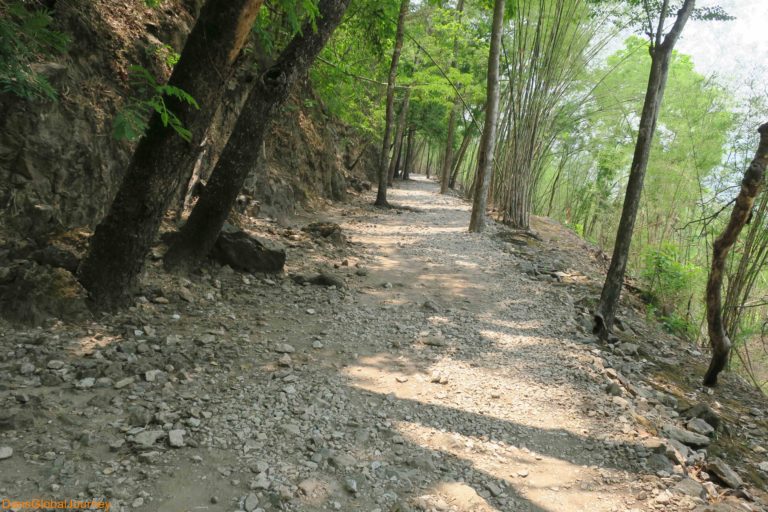
Visiting the museum
When I arrived at the main entrance, I first looked for an ATM and a kiosk. Well, there was no ATM, but at least a small kiosk which sold some water. The path to the actual location of the Hellfire Pass is well maintained and labeled. After 15 minutes of walking, I arrived at the beautiful memorial for the unfortunate workers who were forced to built the railway. It was surreal to look at the small track in the massive rock formation and imagine them building it with nearly no equipment.
Afterwards, I walked along the former track, but unfortunately had to turn back after some time. Because I feared that I might miss the train back to Kanchanaburi. So I left the area and went back to the street. There I waited at the stop until a bus to Nam Tok arrived. Just raise your arm, and it’ll stop for you. Including the water and the bus ride I was down to 200 Baht.

The arrival in Nam Tok
After another pass through the checkpoint without any checks, I arrived in Nam Tok. Another tip, the bus stops when you’re about to get off. So you don’t have to jump out like me when it was slowly driving next to the waterfall… The waterfall itself, Sai Yok Noi, was quite nice, but nothing too special in my opinion. There were many locals and children using the water for a cooling in the heat. I just walked along a few paths, and later continued my journey to the centre of the town along the main road.
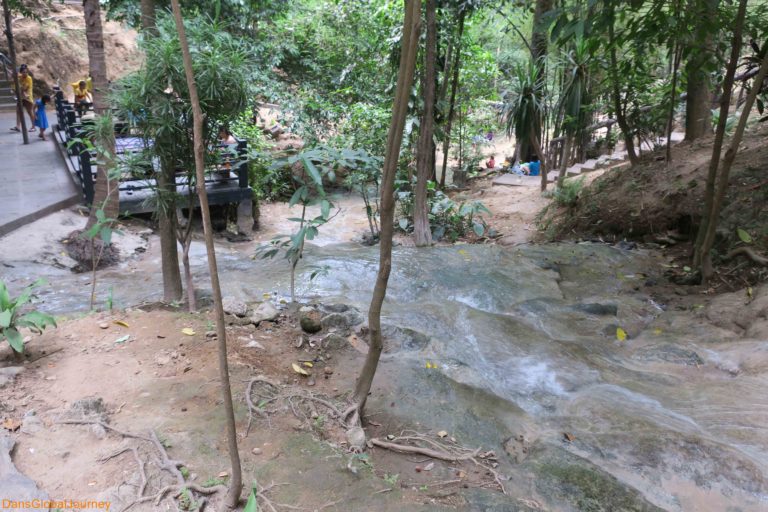
I hoped to find an ATM on my walk and preferably a nice place to eat something. After awhile, I recognized an ATM at a small store next to the road. So I quickly inserted my card, but I was greeted with a big error message. It’s just a domestic ATM in this small town. So what should I do with only a few money left and without a chance to get more anywhere? Spend more of it. I became hungry and decided to eat some grilled vegetables. They were quite tasty and definitely worth the money. I still had around 100 Baht, so it was enough for the trip by train.
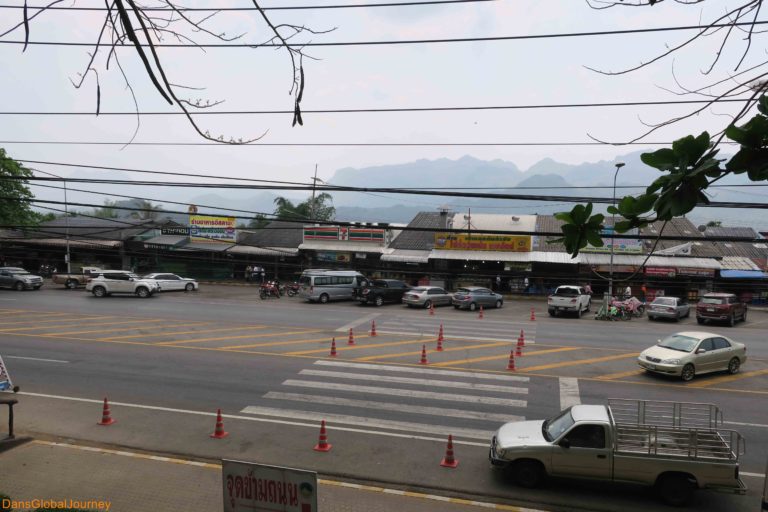
Walking around the small town of Nam Tok
Nam Tok isn’t very special, just a normal Thai countryside village. But there is some nice scenery with forested hills and mountains in the background. These offer some good photo opportunities. The village is mainly built on one big road, so that means there are only a few side streets which are mainly centered around the station. But that also means that it was a long walk for me. It was a 30 minutes walk until I arrived at the train station from the restaurant.
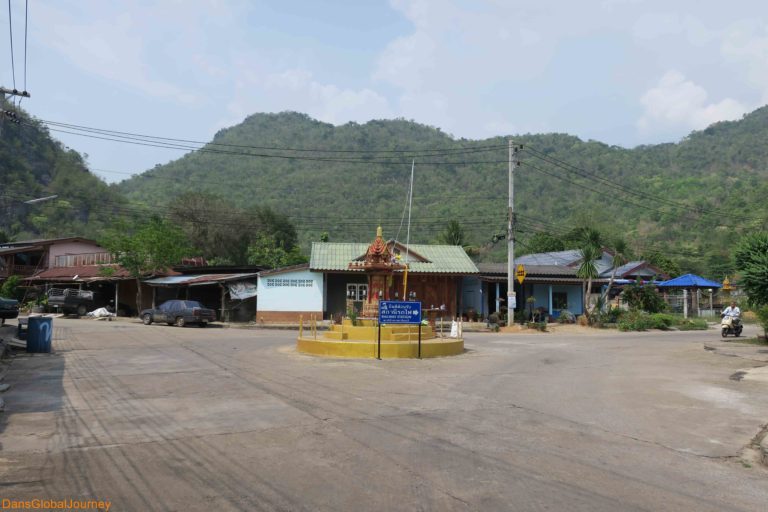
I already saw the train, but the ticket counter was still closed. I was the first person there and waited for some time… looked at the cats strolling around the station… looked at the cafe on the opposite side in which I couldn’t go… and finally the ticket counter opened. The ticket was bought, and I was ready to board the train.
The train ride back
The train back to Kanchanaburi leaves three times a day, and I took the last one at 3.15pm. An important aspect you have to keep in mind is, that you have to sit on the right side of the train to enjoy the beautiful views of the river. The first half of the train journey is also the more beautiful one. Afterwards, the scenery switches to fields. When there’s enough empty space in the train, you can change to the left side, because there are no electric wires bocking the view.
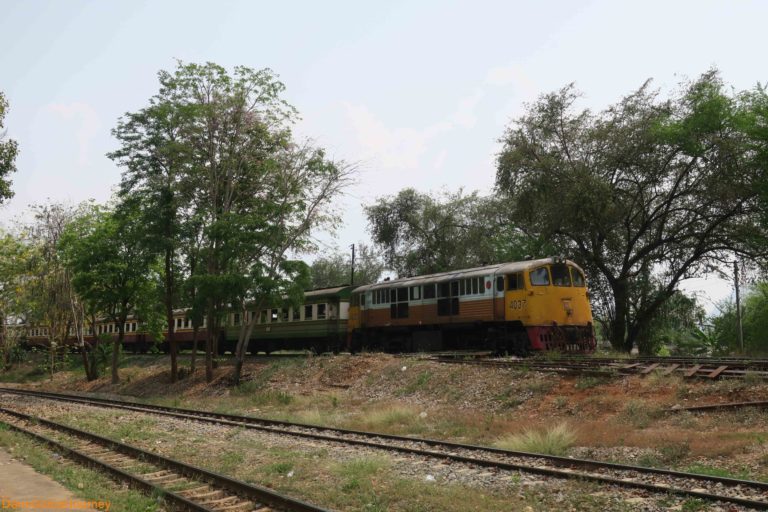
The two highlights of the train ride are the Wang Po Viaduct and the River Kwai Bridge in Kanchanaburi. Especially the viaduct is very impressive and everyone looked outside the open windows. After the viaduct, many passengers left the train to get back to their tour buses.
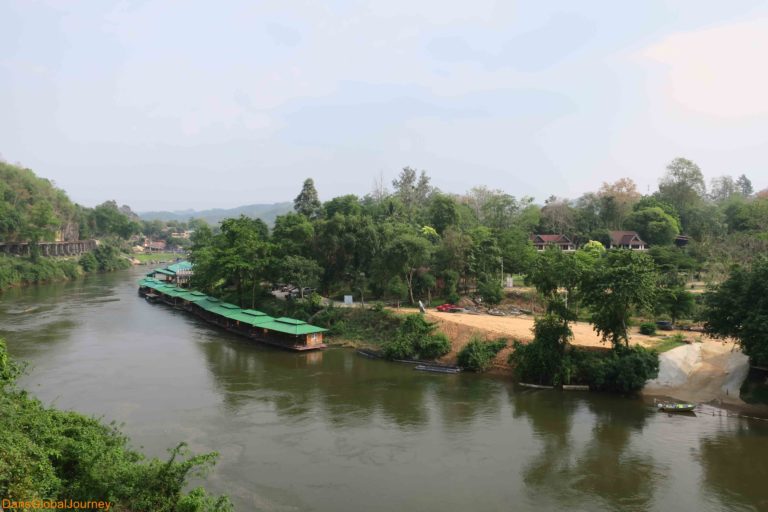
The end of the day
There are actually two stations in Kanchanaburi, one directly next to the bridge, and then the main station. I got off at the bridge, because I haven’t seen it from a close distance before. After that, I had a long walk back to my guesthouse and an ATM. The sun slowly faded away, and it became dark in Kanchanaburi. It was a great, adventurous day, although I wasn’t prepared too well.
